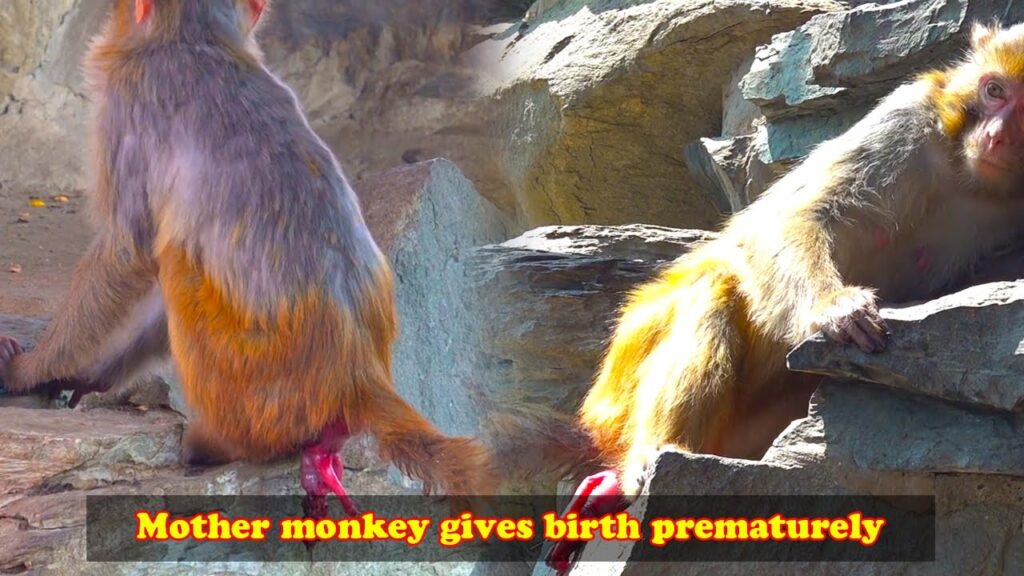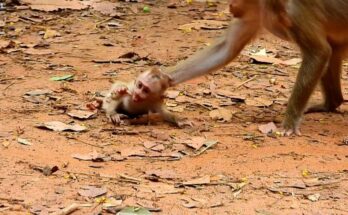In a deeply sorrowful turn of events, a young monkey’s first attempt at motherhood ended in tragedy deep within the forest canopy. The young female, estimated to be barely past adolescence, went into labor as dawn broke over the jungle. What was expected to be a moment of new life and celebration quickly turned into a heartbreaking ordeal that left both her and the surrounding troop visibly shaken.
According to primatologists observing the troop as part of a long-term wildlife study, the labor appeared to begin normally. The expectant mother—still inexperienced but physically mature—found a quiet spot near the edge of the group’s resting area. She displayed typical nesting behaviors, such as grooming herself and choosing a branch that offered both support and privacy. However, as the hours dragged on, it became clear that the birth was not progressing as it should.
The forest fell eerily silent as the female began to show signs of extreme distress—screeching in pain, clutching her abdomen, and rocking back and forth. Nearby troop members, including older females, watched from a distance but did not intervene. In wild primate societies, birth is typically a solitary process, and assistance is rare unless the mother has a close bond with another female. In this case, her youth and relatively low status may have left her isolated when she needed support the most.
By midday, the outcome was tragically clear. The baby was stillborn, and the young mother, exhausted and dazed, clutched the lifeless body, refusing to let go. Such behavior is common among primates—grieving mothers often carry their deceased infants for hours or even days, unable to immediately accept the loss. This period of mourning, once thought to be purely human, reflects the emotional depth of nonhuman primates and their capacity for grief.

Witnesses described the scene as “gut-wrenching.” The young monkey remained still for hours, occasionally vocalizing softly, her face blank with shock. Other troop members eventually resumed their daily routines—grooming, foraging, and resting—but a quiet tension lingered in the air.
The cause of the stillbirth is not yet known. Researchers suspect a combination of factors, including the mother’s young age, possible inexperience, and the physical stresses of life in the wild. Poor nutrition, high stress levels, or undiagnosed illness may have also played a role. Wild births are inherently risky, and young mothers face significantly higher chances of complications.
This tragic event highlights the fragile balance of life in the forest, where every new birth carries both hope and risk. It also underscores the emotional lives of animals, particularly primates, whose responses to loss bear striking resemblance to our own.
The young mother has since begun to rejoin her troop’s daily movements, though observers say her demeanor remains subdued. As she slowly heals, both physically and emotionally, her story serves as a sobering reminder of the trials faced by wildlife—and the quiet strength it takes to endure them.
